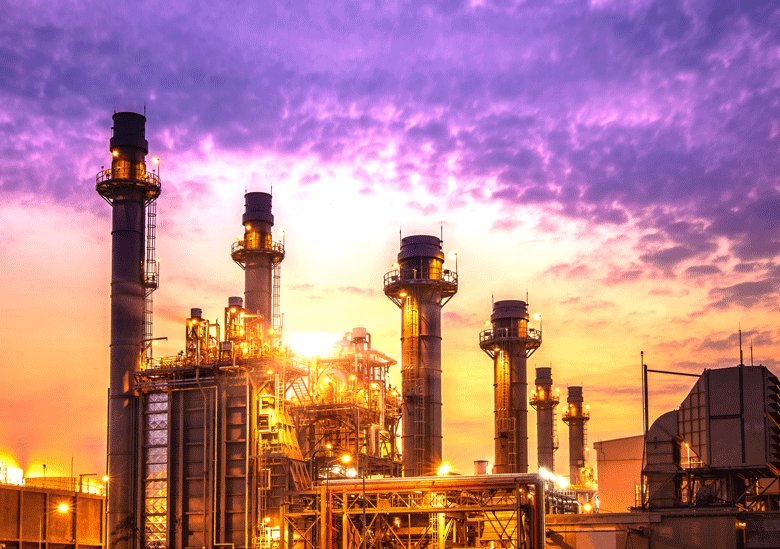

Forty years after the first ethane was cracked in the Gulf, the region’s petrochemicals producers are looking to liquid feedstocks for the next phase of growth.
For nearly a decade, the message from the Gulf Petrochemicals & Chemicals Association (GPCA) has been remarkably consistent: the Gulf states must work harder to create value from their hydrocarbon resources by driving further downstream.
Portfolio expansion
The search for higher margins, and a more resilient source of income, has pushed oil producers to expand their portfolios into petrochemicals by building new integrated facilities. The take-up has been slow, but this is starting to change. Growth will have to come from speciality chemicals, Abdulwahab al-Sadoun, GPCA’s secretary general said.
 “The scope for advantageous access to feedstock is diminishing ... a shift to heavier feedstock is already visible in the Middle East,” the Paris-based International Energy Agency said in a seminal report on petrochemicals demand in October 2018. It continued, “Competition in emerging markets is increasing. Speciality chemicals, once a route to new sources of high income, are becoming commoditised.”
“The scope for advantageous access to feedstock is diminishing ... a shift to heavier feedstock is already visible in the Middle East,” the Paris-based International Energy Agency said in a seminal report on petrochemicals demand in October 2018. It continued, “Competition in emerging markets is increasing. Speciality chemicals, once a route to new sources of high income, are becoming commoditised.”
The trend is also being driven by a scarcity of gas. “There is no gas left in the region,” said Mutlaq al-Morished, CEO of Saudi Arabia’s National Industrialisation Company (Tasnee) at the GPCA forum in Dubai on 27 November 2018.
Instead, demand has shifted to naphtha, a by-product of the crude oil refining process, Al-Morished noted. Seven new petrochemicals projects are planned across the region, and all but one will use naphtha.
Saudi leads
State energy giant Saudi Aramco is leading the expansion, setting ambitious plans to move further down the energy value chain. Within the next decade, the company plans to convert between 2-3 million barrels a day (b/d) of crude into chemicals, Aramco CEO Amin Nasser announced at the event.
In early November, Aramco revealed that it would build a new facility at Yanbu on the Red Sea coast with Saudi Basic Industries Corporation (Sabic) to convert 400,000 b/d of crude oil directly to chemicals, bypassing the normal refining process. Once complete in 2025, the complex will produce 9 million tonnes a year (t/y) of petrochemicals and base oils. This while Aramco works on its acquisition of 70 per cent of Sabic, a deal that could be worth as much as $100bn.
Other regional producers are also pushing ahead. Abu Dhabi National Oil Company (Adnoc) is working on plans for Borouge-4, the newest phase in its joint venture with Vienna-headquartered Borealis. This is along with the expansion of its industrial complex at Ruwais, where it plans to build a new refinery and petrochemicals complex, based around a new 1.5 million t/y cracker.
Kuwait’s Petrochemicals Industry Company also has plans for a third cracker, known as Olefins-3. Oman too wants to build an integrated petrochemicals complex at Duqm, the site of its new 230,000 b/d refinery joint venture with Kuwait Petroleum International.
Production levels
Total petrochemicals production from the GCC is expected to grow by 7.6 per cent a year to 2027, hitting 38.7 million t/y, according to GPCA figures.
“Unlike the past where capacity is the key indicator of the industry, moving into speciality chemicals [sees] smaller volumes. So volume growth is not that big, but we will grow in value,” said Al-Sadoun.
Not all of this will be built inside the region, however, as producers look to build closer to the global centres of demand or cheap feedstock. Nearly 60 per cent of the growth will be built in Asia, the world’s biggest source of demand growth. Saudi Aramco and Adnoc have already begun this process, announcing plans in June to join major Indian oil companies to build a $44bn 1.2 million b/d integrated refinery and petrochemicals complex at Ratnagiri on India’s western coast. It will produce 18 million t/y of products and chemicals.
Another 30 per cent will be built in the US, taking advantage of the abundance of shale gas feedstock, and here, the Gulf’s producers are already making inroads. In May, Abu Dhabi acquired US-based petrochemicals firm Bayport Polymers, which has a new 1 million t/y ethane cracker currently under construction, and downstream units.
Aramco, through its US subsidiary Motiva, is also planning to build a petrochemicals plant at the existing Port Arthur refinery complex in Texas, and is considering other petrochemicals projects elsewhere in the US.
“You need to have a global footprint of assets that enable you to become really competitive,” said Yousef al-Benyan, Sabic’s CEO and chairman of GPCA, who was speaking on GPCA TV.
Al-Benyan was ambivalent about the progress to date, but said he hoped the region’s players would take advantage of the forum to push ahead with their planned downstream drive.
You might also like...

Al Ula seeks equestrian village interest
26 April 2024

Morocco seeks firms for 400MW wind schemes
26 April 2024

Countries sign Iraq to Europe road agreement
26 April 2024

Jubail 4 and 6 bidders get more time
26 April 2024
A MEED Subscription...
Subscribe or upgrade your current MEED.com package to support your strategic planning with the MENA region’s best source of business information. Proceed to our online shop below to find out more about the features in each package.









